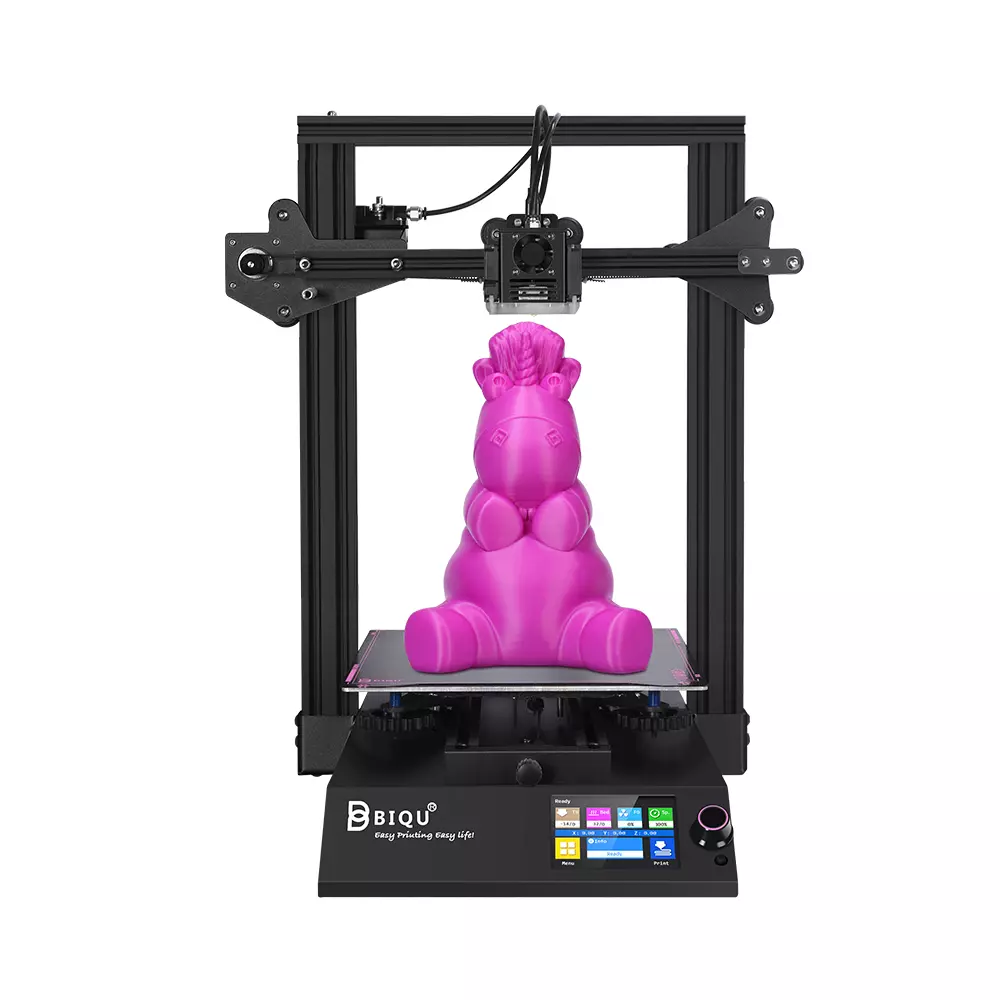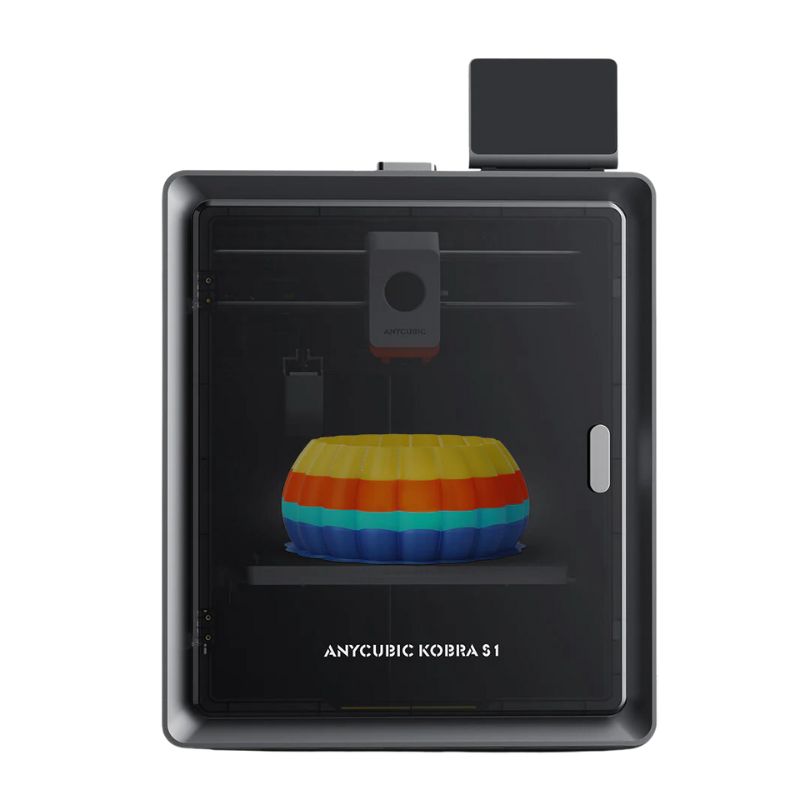Compare BIQU B1 vs Kobra S1 Combo
Comparison between the best 3D printers
Choose the best 3D printer at the best price. The cheapest 3D printers are here.
Buy a 3D printer here with 3D Fila.
 |
 |
|
| Model | BIQU B1 |
Kobra S1 Combo[BUY Kobra S1 Combo] |
| Printing Material | Filament | Filament |
| Buy Filament for BigTreeTech BIQU B1 | Buy Filament forAnycubic Kobra S1 Combo | |
| Estimated price | $269,00 | $599,00 |
| Manufacturer | BigTreeTech | Anycubic |
| Release Year | 2020 | 2025 |
| Print Volume [mm] | 235x235x270 | 250x250x250 |
| Printer Size [mm] | 412x402x492 | 400x410x490 |
| Weight [kg] | 8,00 | 18 |
| Power Loss Recovery | YES | YES |
| Enclosed printer | NO | YES |
| Bed Leveling | Manual | Automatic |
| Filament End Sensor | YES | YES |
| Bed type | Heated | Heated |
| Power supply system | Bowden | Direct Drive |
| Standard nozzle | 0,4 | 0,4 |
| Maximum Nozzle Temperature [°C] | 250 | 320 |
| Maximum Bed Temperature [°C] | 100 | 120 |
| Maximum printing speed [mm/s] | 100 | 600 |
| Filament holder | YES | YES |
| Camera for supervision | NO | NO |
| Recommended filaments | PLA, TPU, ABS, PETG | PLA, PETG, TPU[1], ABS, ASA |
| Recommended slicers | Cura, Simplify, Slic3r | Anycubic Slicer Next, Orca Slicer |
| Maximum Resolution [mm] | 0,1 | 0,01 |
| Processor | 32 Bits BTT SKR V 1.4 | |
| Display | Touchscreen TFT 3,5'' | Touchscreen 4,3'' |
| Power Supply | 24V / 360W | |
| Connectivity | SD / USB | USB, Wifi |
| Operating systems | Windows, Mac, Linux | Windows, Linux e Macbook |
| Date of registration in the system | 2021-04-14 | 2025-02-25 |
| Release date | 2020 | 2025 |
| Extra features | The BIQU B1 is an advanced 3D printer with a silent 32-bit BTT SKR V1.4 motherboard and ARM Cortex-M3 CPU, offering DIY interfaces (I2C, SPI, WiFi) and dual Z-axis. Its dual BTT B1 TFT35 V3.0 operating system allows real-time monitoring and multiple printing modes, including G-code visualization effects. It stands out for its BIQU SSS (Super Spring Steel), ensuring easy model adhesion and simplified removal, with the possibility of using it on both sides. It includes a filament sensor, automatically pausing printing in case of filament breakage. The multicolored RGB lights integrated into the hotend allow you to view the printing status even at night. Additional notes include the need for a BIQU-specific Type-C cable and extra interfaces for smart filament sensor and BL Touch. | The Anycubic Kobra S1 Combo is a fully enclosed CoreXY 3D printer with speeds up to 600mm/s and 20,000mm/s² acceleration. It features a 320°C hotend, native multicolor printing (4 to 8 colors with ACE Pro), and active filament drying. Equipped with LeviQ 3.0 auto-leveling, camera monitoring, AI failure detection, carbon filtration, and a 4.3 touchscreen, it ensures high-quality, efficient, and reliable 3D printing. |
| Support for multiple colors and materials (AMS and CFS) | NO | YES |
Notes * |
||
| Cost-benefit | 7 / 10 | 7 / 10 |
| Hardware | 2 / 10 | 8 / 10 |
| Tela | . | . |
| Print volume | 3 / 10 | 3 / 10 |
| Performance | 1 / 10 | 5 / 10 |
| [BUY Kobra S1 Combo] |
Conclusion |
| In conclusion, the BIQU B1 and the Anycubic Kobra S1 Combo both offer unique advantages tailored to different user needs in the 3D printing landscape. The BIQU B1 is a budget-friendly option suited for those who prioritize affordability and manual control, featuring essential functionalities such as a filament end sensor and a heated bed. Its compact print volume and simplicity make it a good choice for beginners or hobbyists who engage in smaller projects. On the other hand, the Anycubic Kobra S1 Combo caters to more advanced users seeking higher performance and automation. With its larger print volume, faster printing speeds, and automatic bed leveling, it significantly enhances the user experience for complex and larger-scale prints. The enclosed design, advanced features like AI failure detection, and multi-color printing capabilities set it apart as a high-end solution for enthusiast and professional users. While the BIQU B1 offers a solid, cost-effective entry point into 3D printing, the Anycubic Kobra S1 Combo justifies its higher price with superior hardware, added features, and better overall performance. Ultimately, the choice between these two models should be guided by the user's budget and specific printing requirements. |

